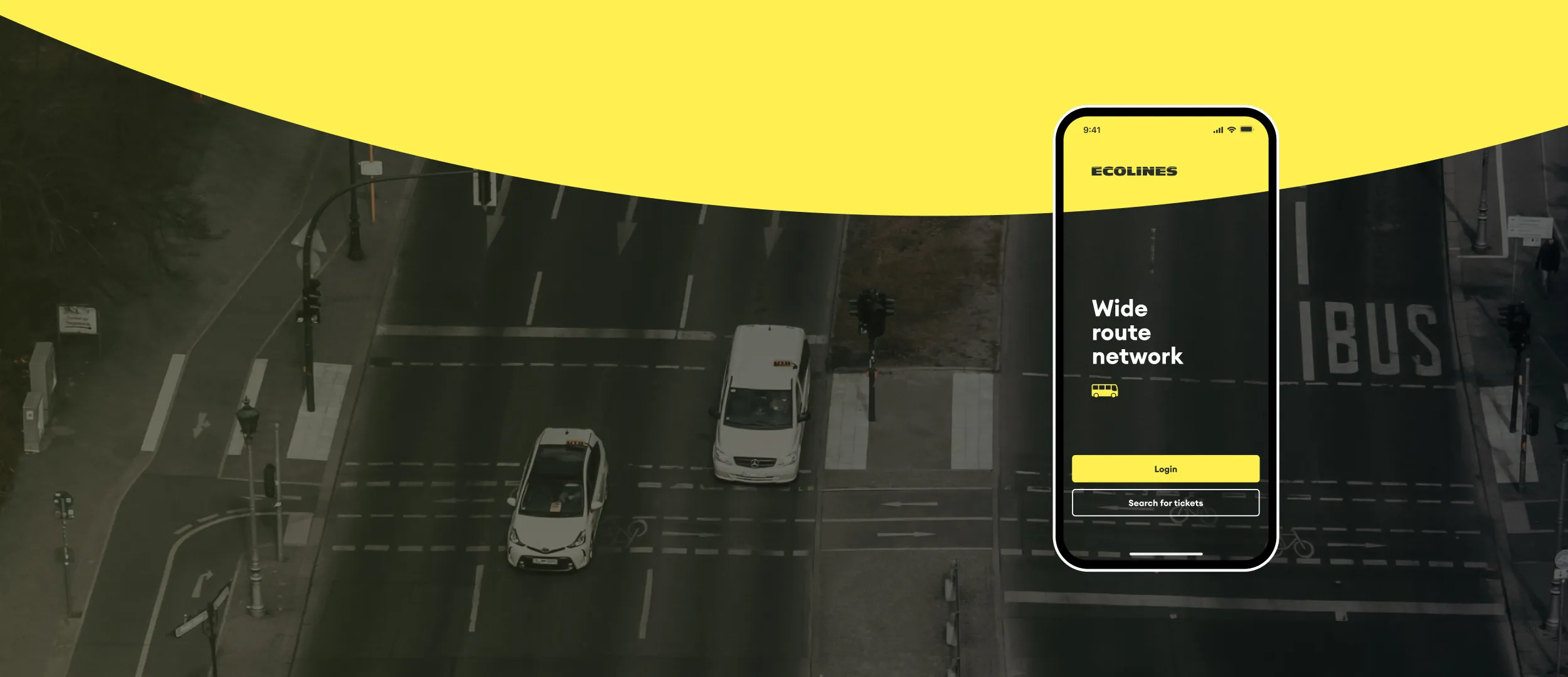
When InDrive entered the market, it seemed there was no room left after Uber, Bolt, and Lyft. But with a clear business model and a focused, flexible product, it carved out a niche and scaled globally.
Building a taxi app isn’t the hard part. Building one that works under pressure, scales across cities, and delivers value to both riders and drivers—that’s where most businesses get stuck. In this article, we’ll share a realistic roadmap to help you avoid common pitfalls and build a taxi app that’s technically sound and commercially viable.
With more than 15 years of experience in logistics and transportation software development, Stfalcon provides top-tier online taxi booking app development services. Let us guide you through the process of creating an app that not only functions but also competes.
Beyond the Basics: Why Your Taxi App Needs a Strategic Foundation
At this point, the global taxi app market is no longer new—it’s mature, competitive, and dominated by well-established players. But that doesn't mean there’s no room to grow. Emerging niches are reshaping the space, creating new business opportunities for those who approach it strategically.
We're seeing significant growth in niches such as:
- Sustainable Transport: Apps focusing exclusively on electric vehicles, carpooling, or even integrating with public transport and micromobility solutions to promote eco-friendly travel.
- Specialized B2B Logistics: Dedicated platforms for corporate employee transport, last-mile delivery for specific industries, or specialized cargo and freight services.
- Regional Dominance: Hyper-local services that deeply understand and cater to the unique needs, traffic patterns, and cultural nuances of a specific city or geographic area.
- Premium Services: High-end executive transport, luxury vehicle rentals with chauffeurs, or bespoke travel experiences.
Our extensive experience in logistics software, particularly in optimizing last-mile delivery for large enterprises and streamlining complex supply chains, has shown us that true innovation and profitability now lie in these specialized verticals. We've seen firsthand how tailored solutions, rather than broad strokes, deliver significant return on investment by solving specific, unmet needs.
Step-by-Step Guide for Taxi App Development
In case you are considering a taxi app solution development but wonder where to start in building a taxi app, just go on reading. We tried to clear up the issue for you.
Read Also:
Build a Car Rental Website — Similar Logic, Different Vertical.
Established business or startup
The type of mobile solution that will suit your needs depends on several factors. The first question is whether you already have an established taxi business and simply want to complement it with the development of an app, or if you are a start-up planning to engage drivers. Nowadays car rental website development or services worth their salt offer their clients mobile apps to provide better service and unique customer experience.
Business Model
The next step is to define the business model to use: whether you set up a company that hires drivers and pays them a salary, or you are an Uber-like business. The latter receives fees from drivers for the rides they provide through the common taxi orders base. The passengers then pay the drivers directly.
The payment model depends on the business type chosen, and it may become a challenge to choose the right one.
Understanding the Market
It’s essential to know the market you are going to enter: whether you create a taxi app within your city or country and scale it later or you dare to craft a global service. Depending on your plan, choose a payment system that works best for your chosen model. Each country has its preferred systems of payments, and global platforms have their peculiarities as well. The process of authorization can also be realized through a local payment system. All these factors influence the complexity of the integration process and, in some cases, testing, particularly for local systems. With this information in mind, your taxi app developers will be able to make more accurate estimations of the work and time required.
Financing
Every undertaking requires means to realize it, so you have to know where your financing will come from. It may be a loan, by your own means, or investments. The last variant is actually the best one for breaking new ground in business.
Marketing strategy
As soon as you know what product you are going to launch, you should consider a marketing strategy to use.
You should first know how to attract drivers and then how to market your solution, which passenger pains to address and solve to gain new and returning customers.
Possible scenarios
Before taxi mobile application development, it’s important to consider all the user stories possible, figure out the ones that matter, and disregard those less significant.
Then you can create a Minimal Viable Product (MVP), gather feedback, make the necessary improvements, and proceed iteratively to win the market as planned.
Cab Booking App Design
The taxi booking app UI design should be simple and user-friendly for convenience in each user step. The onboarding must be easy. It could offer to sign in with email, phone, or social accounts. The typical home screen is filled with a dynamic map interface, integrated with a search bar for pickup and drop-off locations. Also, shortcuts to saved places, such as "Home" or "Work" should be mentioned. Clear visual cues like a "Current Location" button make the experience intuitive.
A well-designed cab booking software should include an interface for selecting ride options such as economy, premium, or shared rides. It needs to display price estimates and ETAs, with clear icons for vehicle capacity. The booking confirmation screen needs to summarize the important details. For instance, pickup drop-off points, estimated cost and time, and driver information such as name, car model, and rating. When a ride is confirmed, real-time tracking on a live map enhances transparency, along with contact options and an ETA countdown.
Payment methods are versatile, enabling cards, digital wallets, or cash. It needs to include features like fare splitting. Screens after a ride need to focus on ratings and feedback. A trip history section provides access to past journeys and receipts that can be downloaded. This is about personalization, with profile settings for saved locations, payment methods, language, and currency preferences.
Cab Booking App Development
The cab booking application can be developed in many ways depending on the project's goals, available budget, and target audience.
For native apps, ideal platforms would be Swift for iOS and Kotlin for Android. They offer better performance, device-specific features, and improved user experiences, but may require significant development costs and time.
Want a web app that does more?
Let's build a solution that's smart, sleek, and powerful.
Alina
Client Manager

Cross-platform frameworks like Flutter allow developers to run a single codebase on iOS and Android. Cross-platform frameworks like Flutter allow developers to run a single codebase on iOS and Android. It saves costs by cutting development time without sacrificing good performance, making it a viable choice for taxi booking app software. Flutter stands out because of its rich UI capabilities, making it well-suited for interactive maps and animations in a car booking solution.
Progressive web apps are a web-based solution that runs on any device with browser support. Cost-efficient and available, PWAs lack native-level performance and some features. It is due to the inability to utilize native-specific features, such as real-time GPS tracking capability.
Navigation technologies in car booking applications commonly include Google Maps API or Mapbox, Firebase or AWS for backend services and notifications, and Stripe or PayPal SDKs for processing payments.
Challenges in Taxi Application Development Process
No development process is possible without difficulties to overcome. The key challenges we have faced as a taxi app development company are the following.
How to handle stops on a client’s request and forced by traffic
How to handle stops on the passenger request, in case he wants to smoke, for instance. On the one hand, the driver can indicate it. However, our client prefers to automate this option.
Then we face the problem that GPS does not stop when a car stops. It shows it as a movement around a certain point.
On the other hand, we also have to solve it for the traffic jams, so that the sensor does not consider moving slowly in a transportation congestion a stop and charge passenger for it.
Geolocation inaccuracy
Google Maps is not an accurate enough technology to integrate into taxi applications. When developing a taxi booking system project, it is crucial to select the most precise geolocation service available. Taxi drivers in Ukraine use City Guide since it provides more accurate coordinates, locations, and addresses. For other countries, their local systems of geolocation should also be considered and checked against Google Maps to choose what is best.
GPS Testing
Since the taxi service is about riding according to a route, testing should be done to make it accurate. You should either simulate it or take a real car and test it live. Ride cost calculation
It may be a tricky thing to automate ride cost calculation, especially when it’s long-distance, with multiple stops or to another city.
Car park description
Depending on the business model you choose, the driver app should be developed accordingly. If you have your own car park, there is no need to approve cars, but if you follow the Uber-like model, the vehicles should be checked, their photos provided and the drivers should deposit some money to their accounts.
How all these challenges are handled and what features are implemented in the solution created will finally determine the overall cost to develop a taxi app. Let’s further look at the taxi app features in more detail.
Necessary features for any taxi application
Most taxi app concepts start with a list of features. But real success comes from designing an integrated ecosystem—one that supports the needs of riders, drivers, and operators in a smooth, scalable way. That means thinking beyond surface-level functionality and architecting every component around real-world workflows, performance demands, and long-term growth.
Let’s break it down.
The Stakeholder-Centric Platform: A Unified Experience
We structure the product around integrated journeys for each key user:
The Rider Journey: From Request to Rating
- Starts with effortless booking (GPS, saved places, vehicle selection, transparent fare estimates). Includes pre-booking, multi-stop trips, and booking for others.
- Continues with real-time engagement: live driver tracking, ETA, and in-app communication. Secure, diverse payment options (cards, wallets, corporate accounts) are integrated.
- Concludes with instant e-receipts, ride history, driver ratings and reviews. Safety features like an SOS button and ride-sharing details are paramount.
The Driver Journey: From Acceptance to Payout
- Focuses on efficient dispatch: intelligent ride requests, one-tap acceptance, integrated navigation (optimized for traffic/tolls), and real-time trip updates.
- Includes transparent earnings & performance management (real-time tracking, ride history, bonus tracking, payouts).
- Ensures support & communication via in-app chat with riders, direct operator support, and access to emergency contacts.
The Operator/Admin Journey: The Command Center
- Offers comprehensive fleet & driver management: onboarding, verification, shift management, vehicle status, and compliance.
- Provides real-time monitoring & dispatch optimization: live map of active vehicles/rides, intelligent driver-rider matching, manual intervention capabilities, and geofencing.
- Delivers analytics, reporting & revenue management: insights into operational performance, driver metrics, customer satisfaction, dynamic pricing tools, and dispute resolution.
Now, let's talk in more details about the most essential features taxi mobile app development should include:
- API
- Registration
- Maps, GPS and routing
- Communication and notifications
- Payments
- Profiles and rating
Most companies prefer separate taxi apps for drivers and passengers. So let’s see how to make a taxi booking app for both taxi users and car drivers.
API
Don’t trick yourself into thinking that app development starts with the process of writing code for the actual app. It is only true for simple apps like a calculator. When creating a service, apps are developed within it; thus, they’re only the tip of the iceberg.
The development starts with describing all possible scenarios for client interaction with service. They are used for planning and building API. Only after all the processes for automating your service are carefully considered, we can start the development process. With API it will be easy for you to integrate new client apps independent of the platform they are build on.
This approach allows you to save time and valuable resources and helps to painlessly scale service in the future.
Registration
You want your app to be safe and easy to use, so offer your users a One-Time Password registration. For such kind of registration a user just enters his mobile number, receives a randomly generated password, which is automatically inserted into the input field of the app to save time and simplify the procedure. The whole process takes just seconds and the client is registered in the app and signed in for the rest of time.
It’s extremely convenient for a taxi service, since mobile number is the key feature we need to interact with a client. With OTP registration a user should specify the phone number only once from the very beginning and later on it will be used for order confirmations, notifications, and communication with the drivers.
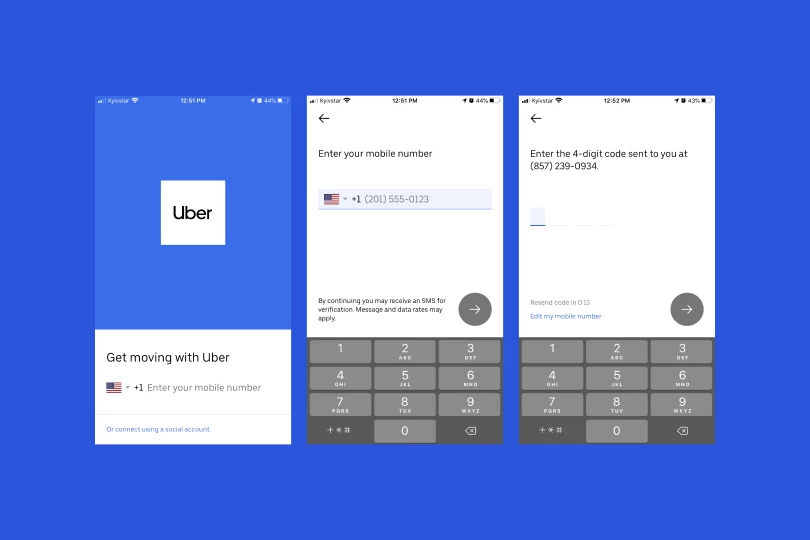
Maps, GPS and routing
GPS is used for identifying current location of the user device. And with maps and positioning users can easily find their car. If you need to calculate duration of travel and build routes, a routing server is required.
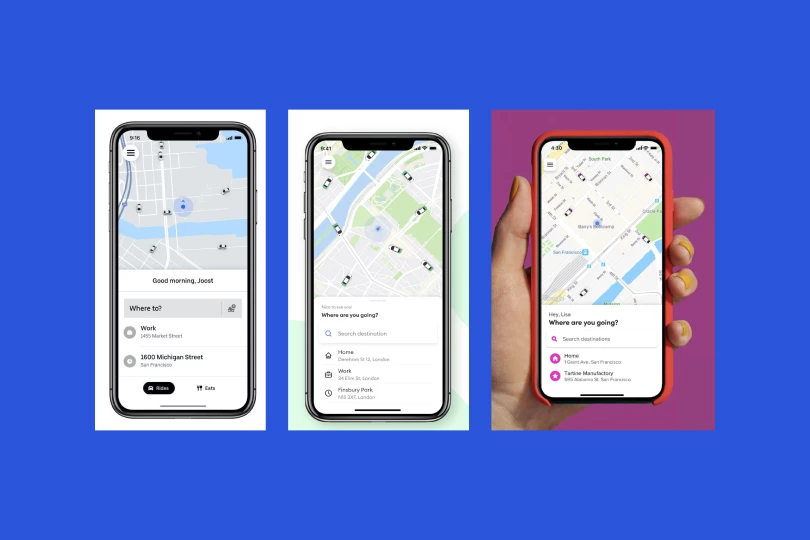
For our road quality monitoring app UARoads available for Android, iPhone and iPad we used OpenStreetMap (OSM) since we also chose their database for our project.
But in general, we recommend using native maps available on the client’s platform. For example, Google Maps is a natural choice for Android. This way, you can reduce development costs.
Communication and notifications
Taxi app developers can spare users some time by offering them to choose their favorite type of car or other preferences (like cars that allow smoking or traveling with pets). The passengers and the drivers or managers should then be able to contact each other via private messages or phone to discuss all the details. Ideally is to keep users’ private data secure. and implement it without revealing the phone numbers.
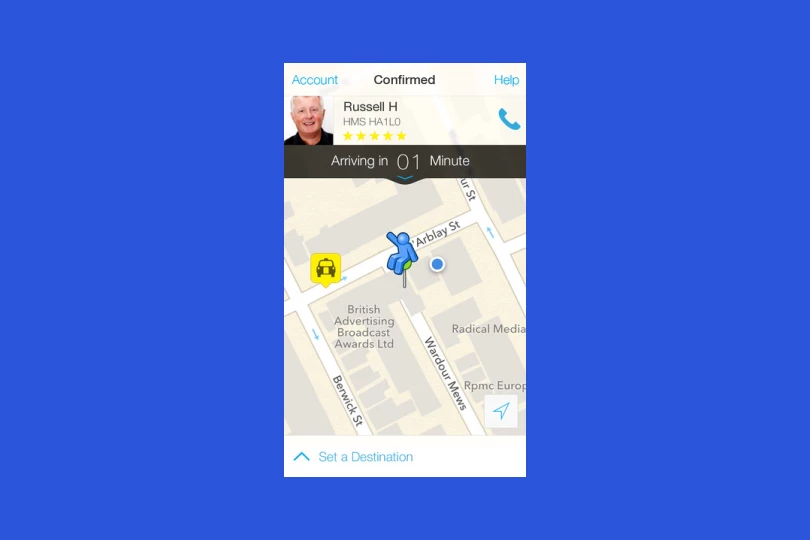
And for notifying users about important events (for example, that rental period is expiring or their taxi has arrived) SMS and push notifications are used. While push notifications are easy to create, for integrating SMS you will need to work with communication service provider. Uber prefers to work with Twilio but there’re other similar services, for example Nexmo or Sinch.
Payments
Offering users to pay for a taxi ride right from the app is already a must nowadays. Take care to offer your passengers various payment options for their convenience.
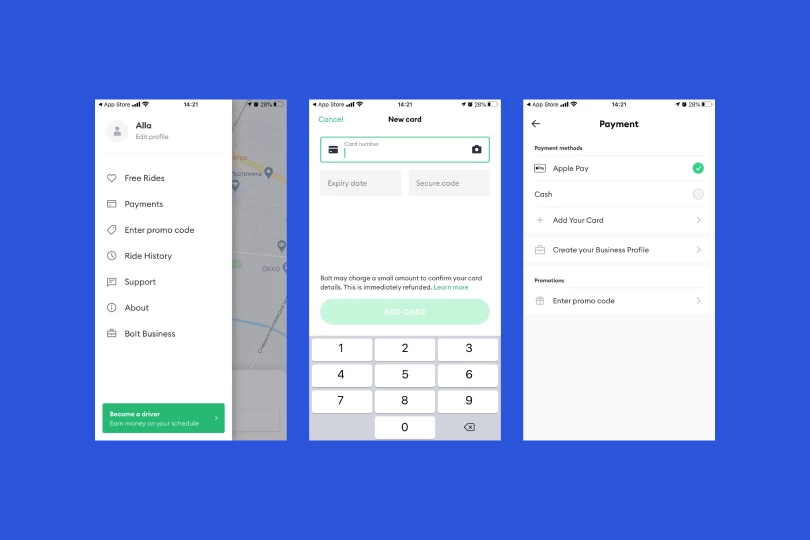
For integrating payments, a taxi booking app development company can use systems like Braintree, WorldPay or Stripe. There are also a number of other services available out there, like Payfirma for bankcards payments.
Tips are also an important thing to remember during taxi and car booking mobile app development. You can allow users to automatically add a tip to the trip value or offer them options for doing it:
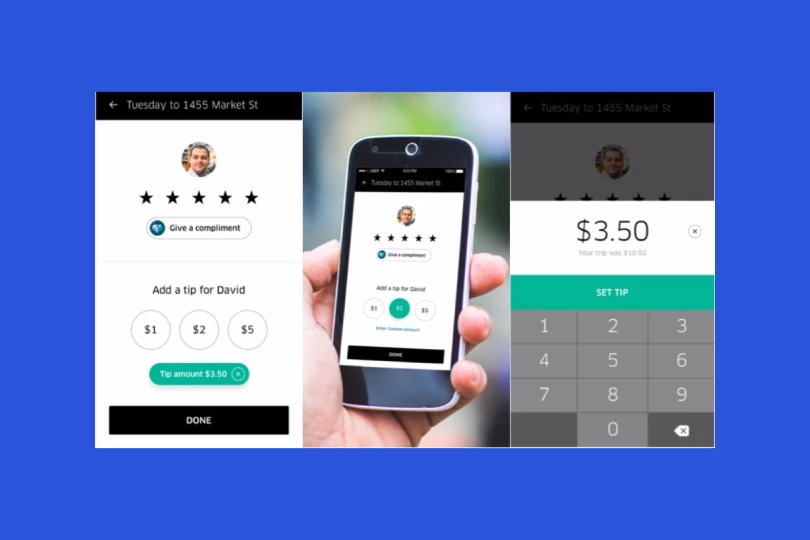
Profiles and rating
Profiles and ratings are important features that allow you to keep the community lively and satisfied. By closely monitoring your drivers’ and cars’ ratings, you can identify problems with customer satisfaction at early stages. By allowing drivers to rate passengers, you can make this process even more valuable. Here are examples from Hailo and Lyft:
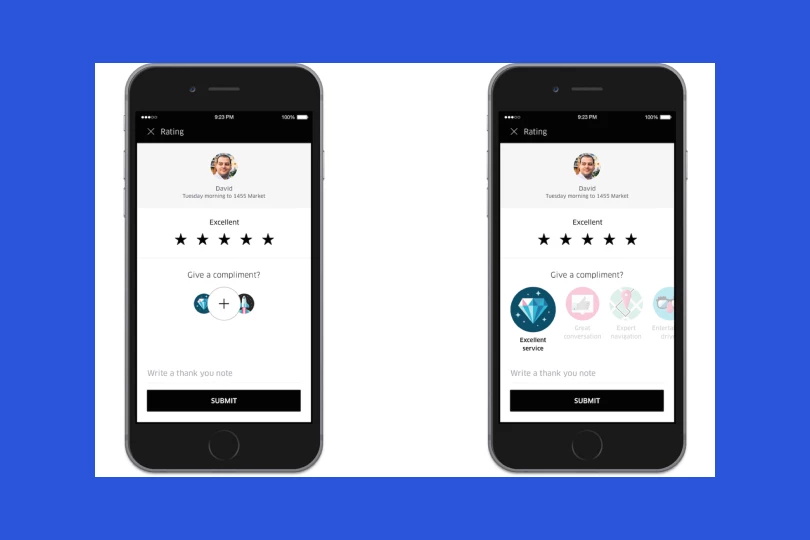
As for profiles, you can include as little information as possible, for example, a photo, name and car model for drivers or, if you prefer, make it more extended and allow users to add a small bio like in Sidecar:

Why Custom Taxi Booking App Development Over Ready-made Solution?
Ready-made solutions look quicker and more cost-effective. Custom app development offers much greater flexibility, scalability, and long-term returns.
1. Tailored to Your Business Needs
The custom taxi booking app aims to align with your business model, goals, and customer preferences. Whether it's highly specialized features, region-specific integrations, or an excellent UI, a custom solution makes your app shine in the market. Ready-made solutions come with generic features that only partially fit your requirements.
2. Scalability for Future Growth
Your business may expand, and your app should grow alongside it. A custom application is designed for scalability: easy addition of new features, allowing for more users, and expansion into new markets with ease of change. Ready-made apps will hinder scalability.
3. Improved User Experience
The success of any application is based on user experience. With a tailored solution, you can fully personalize the design and feature set and introduce smooth, intuitive customer interactions. Out-of-the-box solutions lack customization possibilities, so they would not be as interactive for your users.
4. Competitive Advantage
A bespoke taxi booking application allows you to create new creative features and exclusive functions that will be hard for the competition to use. Advanced route optimization, multi-currency payments, AI-driven insights, etc., might give your app a unique competitive advantage. Usually, more than ready solutions are needed to provide such flexibility in implementing edge technologies.
5. Data Ownership and Security
A custom-made solution ensures you have complete control over your data, ranging from user data to business intelligence. It also means you want to ensure data privacy and adhere strictly to regulations such as GDPR. Pre-developed solutions may be linked to a third-party dependency, creating security risks and intellectual control of sensitive data.
6. Long-term Cost Efficiency
While ready-made solutions may have lower initial costs, they can become more expensive in the long run due to subscription fees, licensing costs, and limited customization options. Custom apps mean a higher initial investment but are more cost-efficient over time. Eliminating all subscriptions or reoccurring fees since rework may be considerably reduced.
7. Seamless Integration with Your Ecosystem
A custom solution can easily integrate with your systems, CRMs, payment gateways, or analytics. Ready-made solutions sometimes don’t natively support integrations, leading to operational inefficiencies.
Ready solutions could work for small-term needs. Flexibility, personalization, and the possibility of growth come with a custom solution. You can develop a customized app where experienced developers will help you meet your current goals and for long-term success.
Examples of Best Taxi Booking Apps
With no doubt the first service you think of hearing about the best taxi booking app is Uber, it has really revolutionized the taxi service and not only. The term Uberization has entered our language and the phenomenon of Uber service influenced various spheres of life.
Uber
In the world of taxi booking apps, Uber is the dominant available in around 70 countries and almost half a million cities.
Uber app allows users to:
- Set pickup location,
- Choose one of the available car types,
- See the approximate time of arrival and monitor your car as it approaches,
- Add your credit or bank card that will be automatically used for paying for the ride.
Bolt
Bolt follows Uber in popularity. It is a well-known taxi app based in Estonia and operating in over 25 countries, Latin America, Spain and Portugal are among them.
The total number of passengers exceeds10 million and half a million drivers who service them. Bolt solution allows to:
- Set the destination,
- Know the cost of the ride upfront,
- Rate the riding experience and the driver,
- Pay in the app.
Lyft
Lyft is the US most popular app operating in almost 650 cities, 9 of which are in Canada. The service is famous for its affordable prices.
Some of the top features of this taxi app are that a user can
- Book a ride with a finger tap on the screen,
- Track his car in real time and see the estimated time of arrival,
- Pay directly from the app,
- Share rides with professional, high-rated drivers.
How do You Find a Taxi App Development Company to Create an App like Uber
Developing an app like Uber requires, among other things, experience and technical expertise. Also, an understanding of the ridesharing industry. Thus, choosing an appropriate development company will be crucial in bringing your idea into reality. Here are the essential points one can refer to while finding the best partner for a taxi project.
1. State Your Objectives and Requirements.
Define what features and functionalities you want in the application. For instance, real-time tracking, matching, payment integration, and a user-friendly interface. Determine if you wish to target specific regions, target audiences, or special features like eco-friendly rides. Having precise requirements will ensure you are better placed when gauging possible companies.
2. Relevant Industry Experience.
Select a company with broad experience developing taxi dispatch solutions. Take a closer look at their portfolio and assess their capability to deliver complex functionalities that include real-time GPS tracking, cross-platform compatibility. Experienced companies have a notion of industry nuances and can give good insights.
3. Technical Expertise Evaluation.
Developers should know the latest technologies and frameworks in the taxi app's development cycle. Technologies include Flutter or Swift for mobile apps with back-end frameworks like Node.js. They must also be familiar with APIs for payment gateway integration, map integrations, and push notifications.
4. Review Customization and Scalability.
It should genuinely represent your business model and scale upwards with its growth. Ask them about their custom solutions capabilities and the development methodology for integrated features. It may include AI-powered route optimization, multi-currency payment support, or prediction analysis.
5. Reviews and Testimonials.
Read customer feedback on Clutch and GoodFirms. Client feedback speaks loudly about the professionalism and reliability of the company. Look at their feedback regarding their communication about project management and post-launch support.
6. Ask for Estimates and Timeline.
Detailed cost estimates from several companies. A trustworthy development partner could provide a line-item breakdown of costs. The lowest price doesn’t necessarily mean the best value for money, which is what one should look for.
7. Consider Agile Methodology.
An Agile approach provides room for flexibility and adaptability throughout development. Ask if the company uses Agile to integrate your feedback into every stage.
8. Discuss Data Security and Compliance.
Data security is of a high importance in online taxi booking app development services. It contains sensitive user information such as payment details and location data. Ensure the vendor follows best practices when it comes to data protection and that it also uses relevant regulations, such as GDPR or CCPA.
9. Ask About Post-launch Support.
A successful app launch is just the start. The vendor should be able to provide ongoing support and maintenance in fixing bugs and implementing updates. Also, it is crucial to make compatibility with new OS versions.
10. Book a Consultation.
Once you’ve shortlisted potential companies, schedule a consultation to discuss your project. Assess their understanding of your vision, communication style, and willingness to collaborate. A reliable partner will ask the right questions and offer valuable suggestions to refine your solution idea.
Finding the right corporate taxi app development company includes research, clear communication, and a focus on long-term goals. Look for a vendor with relevant experience, and technical expertise. Choosing wisely, you’ll set the foundation for a successful solution that can compete with giants like Uber in the competitive ride-hailing market.
How Much Does it Cost to Create an App Like Bolt, Lyft, and Uber?
The estimation of the taxi booking app development cost depends on the complexity level and size of the work. Here is an approximate estimation based on different scales of applications:
1. Small Projects
The basic cost of a taxi app like Uber would be $30,000, with features like ride booking, estimation of fare, and driver tracking. Such applications are suitable for startups and local businesses because require low investments.
2. Medium-sized Apps
The additional functionality, such as in-app purchases, advanced analytics, multi-language support, and an admin dashboard, starts at $80,000. These applications are for enterprises needing scalable solutions with further user engagement features.
3. Enterprise Applications
Large-scale applications with advanced features of real-time fleet management, AI-driven route optimization, custom user roles, and seamless integrations with third-party services start from a base price of $150,000. These solutions are crafted to be highly performant and immensely scalable.
Our transportation & logistics software development agency usually divides our development process into five stages, and taxi passenger app development will go through all of them:
- Discovery Phase,
- UI/UX design,
- Frontend and
- Backend development,
- QA.
Let’s look closer at the process.
Discovery Phase
At the stage of discovery, Stfalcon’s development team meets the client, to understand his requirements and vision of the product, to find out what issues the potential users have and how technology can solve them. Being an experienced taxi booking app developer, we often present our vision aligned with the customer’s business goals and form a unique value proposition together to differentiate the product in the market.
A Minimum Viable Product allows launching a new solution with minimal features and quickly test the product and the market.
In the later iterations, the solution can be improved and optimized.
A discovery phase usually lasts about 3 weeks and the cost of it is around 2000USD.
Design Stage
At this stage, UX and UI designers craft the product, taking into consideration the key user categories, interfaces possible, color schemes preferable, app usability, static and animated elements, and much more.
The work on the solution’s visuals takes up to 3 months and the cost of this stage is somewhere around 12 000 USD for the product. The MVP design is slightly less — around 8000 USD.
Frontend and Backend Development (Two stages combined)
The major stage of a cab booking app development is the development itself. It is based on the agreed design and chosen methodology. It’s vital to decide upon a reliable, secure architecture, and divide the process into iterations, so that the core functionality and all the integrations were developed and implemented both front- and backend.
The average cost of this stage is 50000USD.
Quality Assurance
When you create your own taxi app you want it to operate smoothly and without issues, don’t you? Being a responsible cab booking app development company, we test our products, find bugs, fix them, and keep this process going until we are sure we’ve found everything we could. However, after launching an MVP, the users who book a taxi through the app still find new bugs.
We always warn our clients about it and underline that it’s quite natural.
On a client request, Stfalcon can additionally assist to submit apps to the Google Play and App Store to speed up the time to the market.
Another optional stage that can be ordered by a customer is post-launch support. Stfalcon then continues to improve, optimize and maintain the product after it’s launched.
To conclude: to build a taxi booking app for Android and iOS from scratch you should start with 65 000 USD in mind for MVP, but a customized app for calling a cab will most likely take you around 150 000 USD and more.
Time Spent Developing the Taxi App
The development time for a taxi booking app mainly depends on the feature complexity, design requirements, and scope of work. Therefore, rough estimates could be as follows:
- Basic Applications. A simple application with standard features of ride booking, estimation of fares, and simple GPS tracking takes around 3–6 months for develop. This timeline is ideal for startups or small-scale projects with limited functionality.
- Enhanced Applications. More complex applications that include features such as in-app payments, real-time tracking, ride-sharing, push notifications, and an admin panel take longer, typically 6–12 months. These are usually customized for design and integration, which increases development time.
- Time Constraints and Speeding Up Development. When there is fierce market competition or customers want faster releases, scaling up the team and focusing resources on the essential features can help. While this can reduce development time, it usually raises costs because of increased resource usage.
Development Time Determinants
- Customization and Complexity. The more customized features or tailored designs, the longer their implementation will take.
- Testing and Quality Assurance. Smoothing out the performance across devices adds to the timeline.
- Team Size and Expertise. Larger or more expert teams speed up the process but will generally add to costs.
- Technology Stack. Modern tools and frameworks can streamline development. The learning curves for particular tech stacks might slow progress.
Understanding these factors helps businesses plan realistic development timelines while balancing quality.
Tips for Building a Successful Taxi Booking App
Don’t hurry to spend money on developing a fully-fledged product, and don’t prepare yourself for months and months of hard work behind closed doors.
Firstly, we highly recommend starting with a discovery phase of a project is aimed to make sure that the idea is feasible, and the product is competitive. It also helps to figure out ways to market it and make it highly demanded by end-users, forming a clear vision for success. A well-planned taxi booking system plays a crucial role in streamlining operations and providing a seamless user experience from the very beginning.
Secondly, we strongly recommend starting with the MVP (minimum viable product) concept. You can create a basic version of the app with just essential functionalities and launch it into the market so that users can install and use it. It will help you to reduce your time to market.
Our Experience
Our taxi app development company helps businesses create scalable and efficient custom digital solutions to meet the growing demand for real-time logistics. Below, we will highlight 3 case studies that demonstrate their practical impact.
Speaking about taxi booking app development services, we cannot but should mention mobile solution creation for BBGO. The key challenge laid in the search of taxi apps’ best patterns for the new product. At present design is often sacrificed for the sake of intuitive operation and perfect UX.
The new system includes a unique loyalty system. A passenger receives bonuses after each ride and can use them for a new order or share with a friend. For the drivers, we made the system's entrance quick and straightforward. The integrated map allows full-featured navigation, or the driver can switch it off. During the development process, we created a comprehensive set of flexible services to launch the new system on the market, optimize it, and scale it for future growth.
Other notable cases in the context of transport solutions include an Uber-like app for cargo transportation and MeinFernbus.
An Uber-like app for cargo transportation was created to simplify and systematize the search of carriers in the seeds and grains transportation process.
For three years, we participated in the development of a web project and mobile applications for MeinFernbus. The part of the project related to taxi booking app development specifics is the visualization of bus routes.
Conclusion
Building a successful taxi app in today's competitive landscape isn't about guesswork; it's about strategic execution. It demands a clear business model that goes beyond simple commissions, thoughtful features that solve real user pain points, a smart MVP approach for rapid yet impactful launch, and critically, a tech partner who truly understands the intricate world of logistics and real-world operations.
Whether it's a taxi booking app or the end-to-end implementation of a TMS, Stfalcon can provide all the knowledge and competencies to bring your idea to life. If you select us as your development partner, you will get much more than a highly experienced team. You will acquire a reliable ally who cares about your success. Сontact us to discuss your project, and let's start building your market-leading solution together.
FAQs about Taxi Booking App Development
How to choose the right technology stack for a taxi booking app?
The technology stack for a taxi booking application must balance features, scalability, performance, and cost. Try to stick with tools that provide real-time tracking and integrate a secure payment gateway. Back-end frameworks, such as Node.js, will ensure the seamless performance of your application. While growing cross-platform front-end tools such as Flutter and cloud solutions like AWS or Google Cloud. Safety and stack alignment through your expertise or by working with a development partner are priorities.
Can I develop a taxi booking app for both Android and iOS?
The ride booking app can be developed for both Android and iOS using Flutter, adopting a cross-platform approach. The app can be deployed on both or natively designed for both iOS and Android using Java/Kotlin for Android and Swift/Objective-C for iOS.
How do you handle real-time tracking in a taxi booking app?
GPS is integrated into the taxi booking application, allowing real-time location tracking of drivers and passengers. For this, technologies such as WebSockets or Firebase allow location updates. It will enable instant one-way communication. The locations are processed at the backend and synchronized, utilizing mapping APIs such as Google Maps. They display in real-time where it's tracking and show an estimated arrival time. Trip status gets pushed to the customer using push notifications.

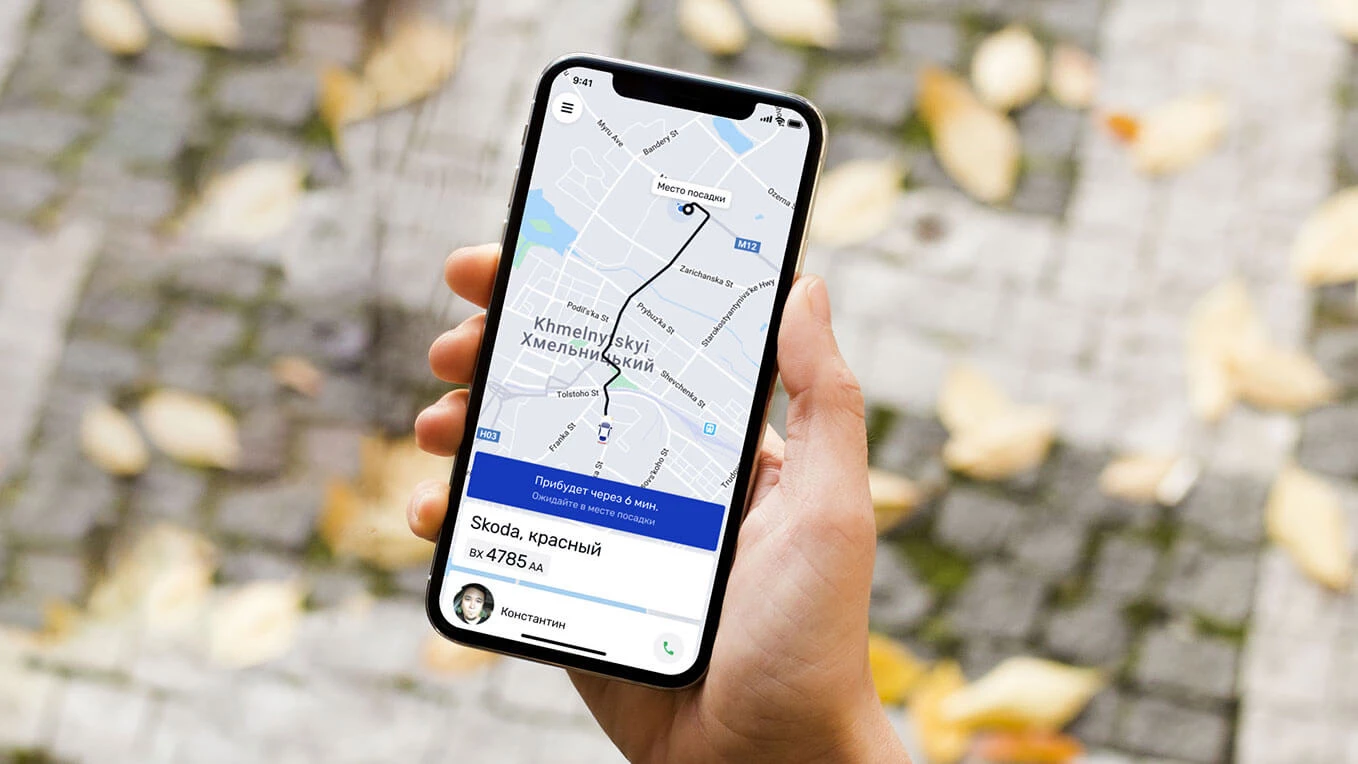 Read the full case study
Read the full case study
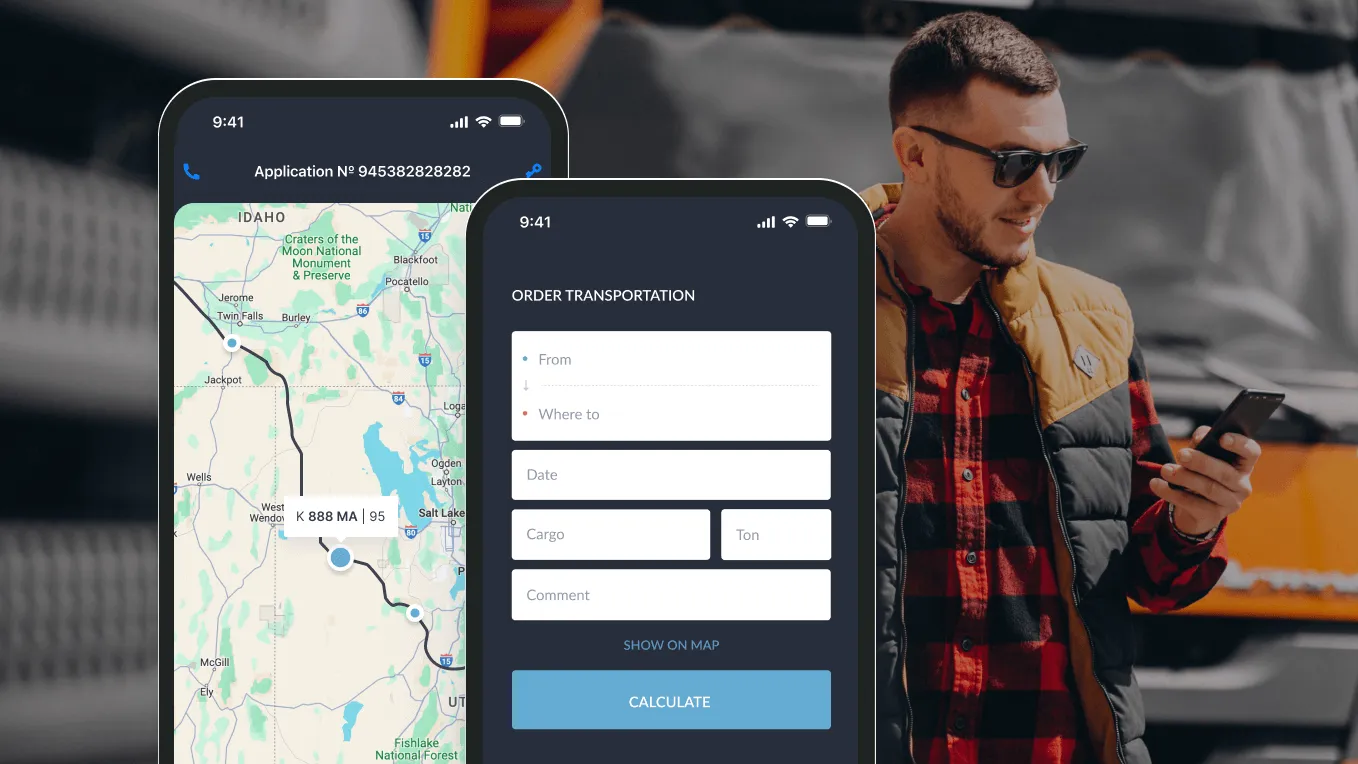 Read the full case study
Read the full case study
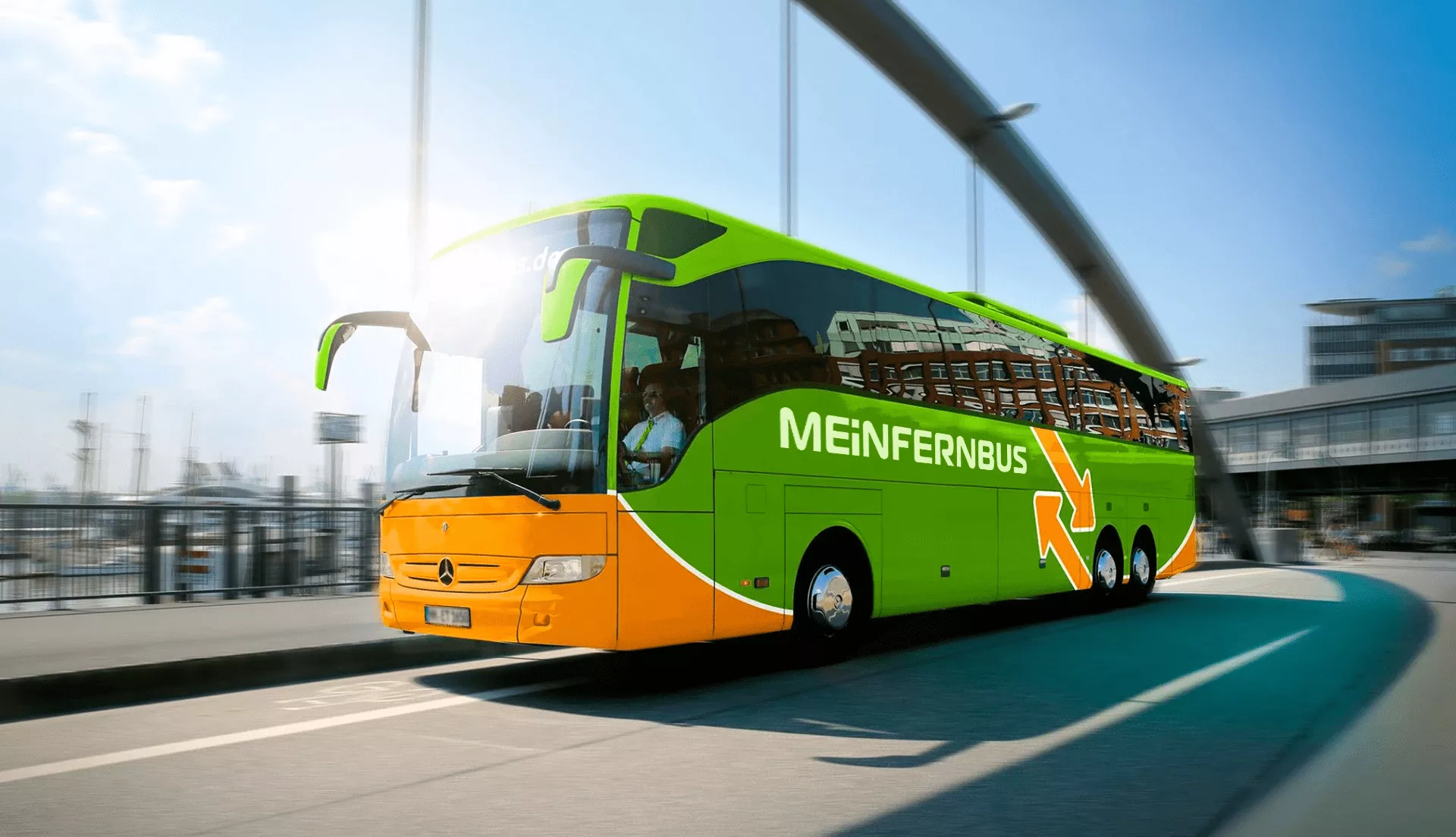 Read the full case study
Read the full case study



